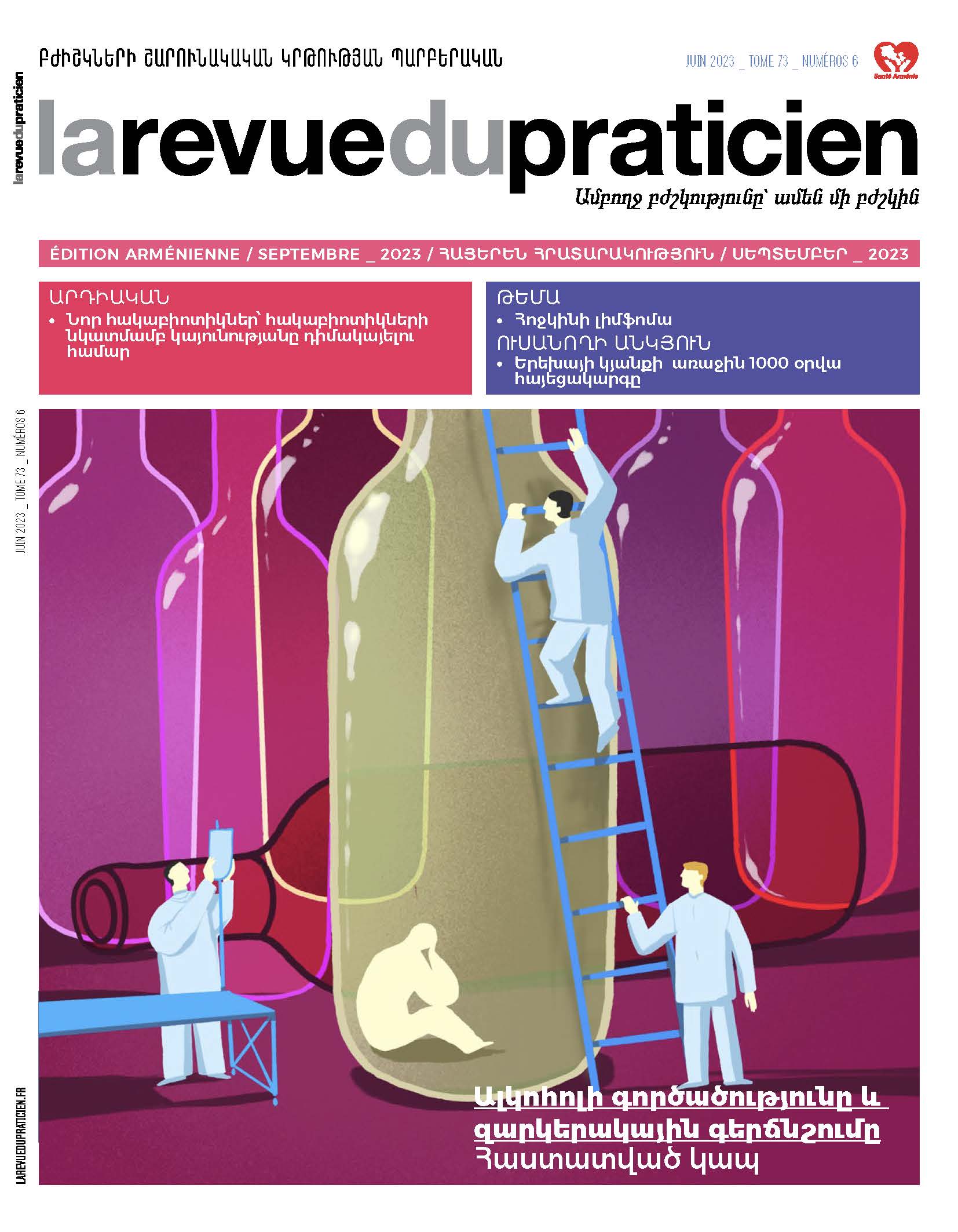Ալկոհոլի գործածությունը և զարկերակային գերճնշումը 81
Mickael Naassila, Naouras Bouajila, Daniel Thomas, Henri-Jean Aubin.Ամփոփագիր
Քաղցկեղից հետո սիրտ-անոթային հիվանդությունները ալկոհոլով պայմանավորված մահացության երկրորդ պատճառն են։ Ալկոհոլի գործածության ազդեցությունը զարկերակային ճնշման և սիրտ-անոթային հիվանդությունների առաջացման վտանգի վրա դեռևս թերագնահատված է ընդհանուր բնակչության և առողջապահության ոլորտի մասնագետների կողմից: Այնուամենայնիվ, բազմաթիվ հետազոտություններ ցույց են տվել զարկերակային ճնշման աճ՝ ալկոհոլի չափաբաժնից կախված, նույնիսկ՝ գործածության այնպիսի քանակների դեպքում, որոնք մոտ են գործածության ընդունելի չափերին (երկու բաժակ, այսինքն՝ 20 գ/օր): Քիչ քանակներով գործածության ենթադրյալ պաշտպանիչ ազդեցությունը հաստատված չէ նույնիսկ կանանց պարագայում: Գործածության՝ «դրվագային թունդ հարբեցողություն» ձևը («binge drinking») հատկապես էական ազդեցություն ունի զարկերակային ճնշման վրա: Զարկերակային ճնշման՝ ալկոհոլով հարուցված բարձրացումը դարձելի է գործածությունը նվազեցնելուց հետո: Ալկոհոլի գերճնշումային ազդեցությունը բացատրելու համար առաջարկվել են մի քանի ախտաֆիզիոլոգիական մեխանիզմներ: Առողջապահության մասնագետների կողմից ալկոհոլի գործածության հայտնաբերումը շատ անբավարար է, մասնավորապես՝ Ֆրանսիայում, նույնիսկ՝ ԶԳՃ-ով բուժառուների շրջանում, մինչդեռ խորհրդատվությունն արդյունավետ է: Կարևոր է ամրապնդել առողջապահական ոլորտի մասնագետների վերապատրաստումը և ալկոհոլի գործածության բացահայտումը և՛առաջնային, և՛ երկրորդային բուժման փուլում, երբ ԶԳՃ-ն արդեն առկա է: Գիտական ընկերակցությունները և ֆեդերացիաները պետք է առավել չափով իրազեկեն ալկոհոլի գործածության հետ կապված վտանգների մասին:
